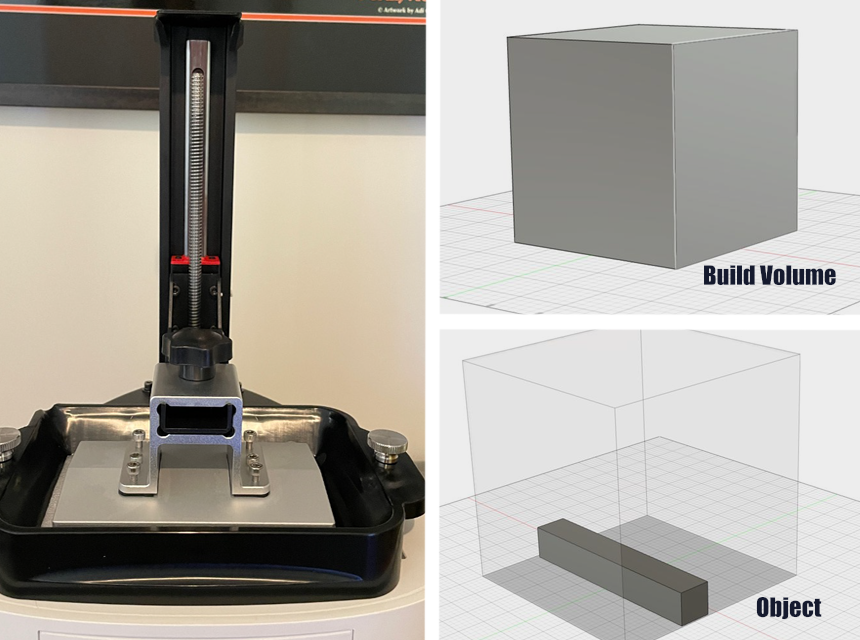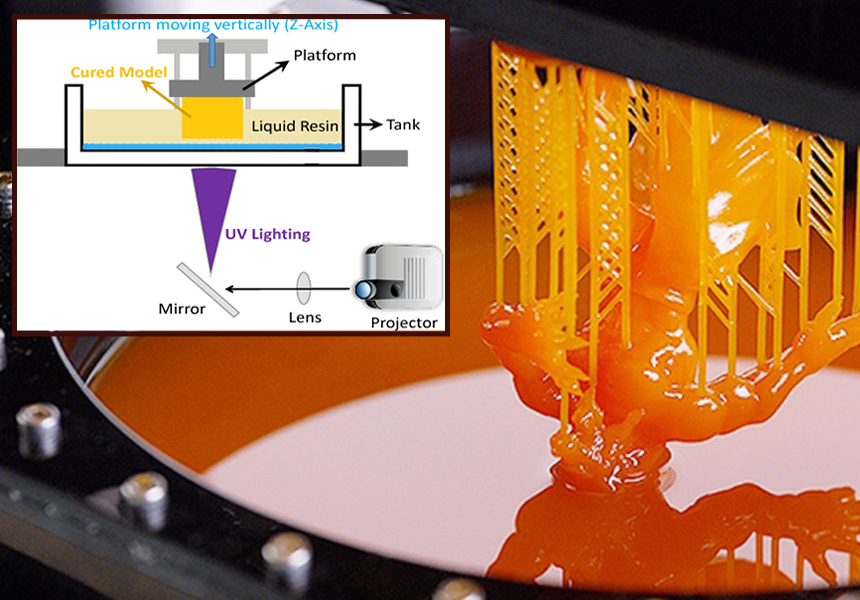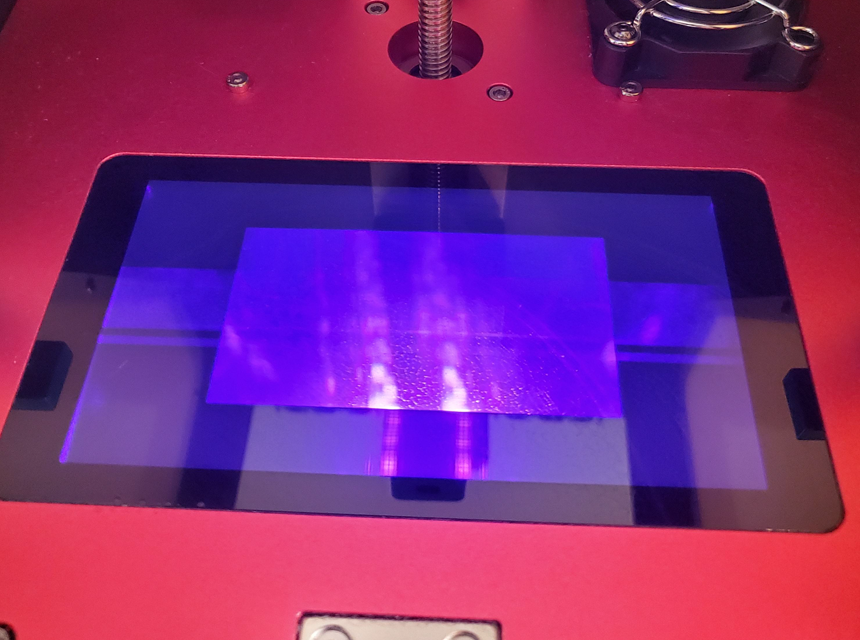

Marvel or DC superhero figures, jewelry for your loved ones, and many more can be easily produced with the help of a resin 3D printer, which creates detailed works using either laser, projector, or LCD screen. It’s challenging to sort out what 3D printer you need and we’re here to help you.
For your convenience, we’ve tested the 17 most popular models and compiled a list of the 6 best resin 3D printers, with the ANYCUBIC Photon Mono X being our top pick. We’ve included models with a longer Z-axis to print several models at once, some models have a high printing speed or the feature to control them remotely, everything to make the process more enjoyable and less time and effort-consuming.
More features: APP Remote Control
The Anycubic Photon Mono X is our Editor’s Choice because it features an 8.9″ 4K Monochrome LCD, a large build area, and an app with remote control, allowing printing of more detailed and accurate models with convenience. This model also has a high printing speed of 60 mm/h, making it one of the fastest models out there. It is one of the largest models too, coming with a 192 x 120 x 245 mm build volume, with such a feature you can print several small models at once, boosting productivity. Its upgraded UV light source helps to get precise results, due to parallel emission and XY resolution of 0.05mm.
The Photon Mono X will undoubtedly give you a satisfactory experience as it’s one of the finest creations of Anycubic. Anycubic, as a brand, has lived up to meeting and surpassing people’s expectations with its plenty of impressive products. This company is reputed for its high-quality printers, and its swift and friendly customer service has volumed up its prestige in the 3D printing business.
More features: 1-year warranty, lifetime customer support
A resin 3D printer with the Best Resolution is for sure the Phrozen Sonic Mini 8K as it comes 22 microns (7680 × 4320 pixels), so you’ll be able to print realistic textures, wrinkles, and pores, competing with professional sculptors. It comes with dual linear rails for added stability and a linear projection LED module for enhancing light uniformity and making sharp and crisp models. Your future models will be firmly attached to a frosted laser-cut building plate, ensuring you get the best results. With a 180mm Z-axis, you get larger printing space if needed you can print several models at the same time.
The Phrozen Sonic Mini 8K is a recent invention from Phrozen. This resin 3D printer was purposely manufactured to entice users of different levels of expertise with its exceptional accuracy and fine details that provide excellent crafting. This 3D printer from Phrozen takes pride in being the company’s highest-resolution printer, and it also belongs to the Sonic Series family.
More features: engine noise < 60dB, 5” high-definition colorful touchscreen
There’s no need to spend a fortune on a high-end resin 3D printer, especially when you only start with this hobby. Yet you can get a quality device when there exists the Creality3D HALOT-ONE. This one comes with a high-resolution touchscreen and easy to operate Linux system which are already features of a premium model. It is also one of the quietest resin 3D printers, producing less than 60dB of noise. Another selling point is an impressive printing speed of 80 mm/h. With decent 2K printing results, a dual cooling system, and a useful Creality Cloud app, you get the finest device at a reasonable price.
The Creality3D HALOT-ONE is an excellent pick for anyone who needs a high-quality resin 3D printer but does not have much to spend on getting a premium one. Unlike the Phrozen Sonic Mini 8K, Anycubic Photon Mono X, especially the high-priced Yidimu Falcon Pro Max, this Creality3D HALOT-ONE is affordable, and, more impressively, it has a printing speed of 80 mm/h.
More features: 1-year warranty, Wi-Fi, U-disk connective, 4.3” touchscreen
What makes this printer unique is its kit. The Flyingbear Shine comes with 250ml resin, latex gloves, fep film, and a plastic shovel – everything you need to get started on the spot! There are Ball Screw in Z Axis for more accuracy and TMC2208 stepper drivers for silent printing. Another noticeable feature is two cooling fans for temperature adjusting while printing for longer service. The Flyingbear Shine also features a dustproof net for keeping your prints out of dust reach. It can be connected to Wi-Fi and compatible with a U disk.
The Flyingbear Shine is one of the latest products from Flyingbear, and it comes with an array of gifts, making it a suitable choice for those who fancy such. This 3D printer performs excellently but has a Printing Speed of 30 mm/h, which is way lower than that of the Creality3D HALOT-ONE, Phrozen Sonic Mini 8K.
More features: 1-year warranty
For newbies we’ve found an excellent option, the Nova3D Elfin which works as simple as that and delivers accuracy. This 3D printer features automatic leveling technology, a fast operating system with clear settings, and an easy-to-use 4.3 touch screen to achieve one goal – to print with less effort and time. Its internal 8GB storage is perfect for the start. Moreover, its uniform light source, fastened z-axis, and modularized design provide users with a quality printout and satisfactory printing experience.
With a printing speed of 20 mm/h, the Nova 3D Elfin has the lowest printing speed among all the 3D printers on this list. However, what it lacks in terms of speed, it compensates for its portability, user-friendliness, and an assuring one-year warranty. And unlike the 4.3” touch screen of the Flyingbear Shine, it offers more in display with its 6″ Mono 2K LCD screen.
More features: 3.5″ touch screen, Photopolymer resin (500g), USB cable, USB stick, WiFi transfer options
Moving on to our advanced model, the Flashforge Hunter DLP, which is also our Premium Pick. Due to its high resolution of 0.0125 mm based on DLP, we recommend this printer to professionals who work in either the jewelry or dentistry industries. To transfer print files to the printer, you can use a USB wire, USB stick, or Wi-Fi connection. Its platform doesn’t need manual calibration thanks to the automatic leveling system. Plus, it provides good adhesion as it has a textured surface. It features a special precision compensation algorithm for a smoother surface and higher dimensional accuracy. Unlike other models, this printer is compatible with plenty of resin materials.
The Flashforge Hunter DLP is a fantastic option for anyone who seeks more out of their resin 3D printer. This resin 3D printer is a classic model with top-notch built quality, and it’s quite versatile for prototyping, jewelry, dentistry, and lots more. Though its has a lower printing speed than Phrozen Sonic Mini 8K and Creality3D HALOT-ONE, it’s quite massive on build volume.
Before diving into the world of resin 3D printers, get acknowledged with their major features, costa, and maintenance tips. The resin 3D printers can cost a fortune, so it’s not as easy as it may seem. First, consider if you’re ready to work with resin, this material is rather expensive compared to the filament. Plus, you’ll need to buy some special tools such as gloves and UV light. Also, the resin itself can be toxic if you won’t take precautions.
The build volume of a 3D printer will determine the size of a product it can produce. Some printers have fewer customization options, while others will offer more flexibility in terms of output sizes.
Depending on what you expect, choose the printer that meets your needs. If you’re focused on smaller projects, then look at models that take up less space and produce models not bigger than 10″ x 8″. If your child is fond of miniatures and wants to create their own, you can opt for a model with a small build volume. Check our review of the best 3D printers for kids if you’re interested in these.
Large build volume printers are 1) more versatile as you can print both small and large models in them, and 2) more capacious, so you can manage several projects at the same time.
Remember, large-volume printers are harder to handle and can be more prone to user errors. However, practice makes perfect! If you want such a 3D printer, then we reviewed the best large resin 3D printers for you.

Such factors as layer thickness and cure time will determine the printing speed. The thicker the layer, the longer it will take to cure. However, high speed doesn’t equal high quality, so it’s better to find a balance between slow and fast for the best results.
If you are looking for a speedy printer, then consider checking our compilation of the best fastest 3D printers. If you don’t pursue fast results, then choose slower-producing materials with a higher level of detail or increased technical characteristics, also colored ones take more time than transparent ones.
The type of curing also impacts printing speed. This way LCD and DLP-based printers are faster in curing than the SLA ones, the former two flash complete layers at the resin design rather than curing it spot by spot.
XY resolution on 3D resin printers is one of the most crucial features to consider as it tells you whether you’ll get small and finely detailed prints or large and coarse ones.
It is measured in the number of pixels displayed by either a laser spot diameter for SLA 3D printers or a projector for DLP 3D printers, an array of LEDs shining through an LCD.
Generally speaking, the lower the value, the better the details you’ll receive.
Layer height or layer thickness is the height of one layer.
For thinner layers, you will need less exposure, but in general, the printer will print more layers. Thus, even if the curing time of one layer is shorter when applying thinner layers, the printing time will be generally longer.
The thicker the layer, the higher the printing speed will be. However, when using thicker layers, you will lose details, and the lines of the layer will be more noticeable.
50 μm (0.05 mm) is a go-to layer thickness that is perfect for miniatures, dental models, and prototypes. For jewelry and miniatures, you can set 20–30 μm heights but it will take 1.5–3 times longer compared to 50 μm layers. For bigger mechanical parts, prototypes, and even some dental applications, you can opt for 100 μm layers, the lines will be visible but the pints will take much less time.
One of the main features a 3D printer can have is a print resume function which allows users to continue printing from where they left it off in case of a power outage or some other unexpected events. This a real lifesaver especially if you work on large projects. Some printers can also be paused and then resumed later if you need to leave for some time. Unfortunately, not all printers feature this function, therefore, be sure to check if it is on the list.
We recommend opting for a 3D printer that features monochrome LCD masking because it is better than the ones with RGB (or color) LCD masking. It is due to the fact that monoblocks transmit ultraviolet light better than their color counterparts, which means that each layer is scanned much faster. RGB 3D printers are a bit cheaper than monoblocks, but even monoblock printers are quite affordable nowadays. Thus, if your budget is not very limited, purchase monoblocks, as they are on average 3-5 times faster.
You’ll need post equipment to clean the printer afterward and sometimes to cure prints. Some models come with built-in equipment, while others require additional purchases. This equipment is not the cheapest, but if you chose 3D printing as a hobby, it shouldn’t be a surprise for you.
Although there’s a UV light in the printer itself that cures layers, the output model still needs curing. For curing don’t forget to purchase an artificial UV lamp which is a must-have because it can take forever to do it naturally, especially if you live in a cloudy region. With a UV lamp or UV curing station with uniform irradiation, you will achieve the best results.
You’ll probably also buy a flexplate, silicone spatula, plastic knives, brushes for easy resin print removal, and containers for storage. There are also some details in a printer that are supposed to be replaced once in a while, including FEP film.
These are two common types of 3D printers; their differences in printing methods drastically influence the results you get. These two are liquid-based 3D printers. They function using resins and thermoplastic filaments. Below you’ll find some points on how these two are different:
There are five different resin 3D printing technologies but they all work similarly. It is a process of printing three-dimensional objects from a digital file. The object is printed layer by layer; each layer is cured with UV light. The results are detailed and sharp prints.
With a resin 3D printer, you get an incredible level of detail in your prints. This printing technology provides you with wide options and colors to be used. Moreover, there are plenty of manufacturers who produce resin so you got options to choose from.

SLA (a.k.a. Stereolithography) is the most common resin technology found in 3D printers is called the SLA technology, which is a type of photopolymerization. This type is popular due to its ability to produce high-accuracy, isotropic, and watertight prototypes. SLA printers usually are more expensive than other types of printers, but they produce higher-quality prints. SLA resins are also quite expensive compared to other resins. Plus, it takes longer to produce a model with an SLA printer. In addition, SLA printers have a smaller build volume. However, for those who seek high-precision, SLA printers will work the best.
DLP (Digital Light Processing) is one more 3D printing technology that is similar to SLA. Whereas SLA printers work with a laser that traces layers, a DLP machine uses an ultraviolet projector to cure then the whole layer at once. Due to the fast curing of each layer, DLP printers also work faster than SLA. However, you sacrifice the quality when printing fast. DLP printers are more affordable, but resins still will cost a lot.

MSLA/LCD (a.k.a. masked SLA) is an enhanced SLA printing technology that uses an LCD light source which is then selectively masked with an LCD screen to create the design. The MSLA technology has a speed advantage over others, especially if you print multiple objects.
LFS (a.k.a. Low Force Stereolithography) is the latest printing technology that uses a flexible resin tank for reducing peel forces when printing and a Light Processing Unit (LPU), enclosed engine, for the production of more consistent and accurate prints. Additionally, LFS printers are also generally much faster and quieter than their predecessors, SLA. Anyway, these machines are more expensive and require special resins that can be hard to find and purchase. If you’re looking for smoother, more consistent parts and models and don’t mind spending a bit extra, then an LFS printer is the way to go.
DLS (a.k.a. Digital Light Synthesis) is a 3D printing technology in the production of which digital light projection oxygen-permeable optics, and engineering-grade materials are being used. Unlike stereolithography, the Carbon process does not pause after each layer. Instead, the resin flows continuously through the “dead zone” just above the oxygen-permeable window. Ultraviolet images are projected onto the oxygen-permeable window to cure the resin. Parts are assembled upside down as the build platform is lifted out of the resin vat.
The 1st place was taken by the Anycubic Photon Mono X, which is also our Editor’s Choice. The reason for it is that this 3D printer provides you with prints of superior quality with amazing detailing at a relatively high speed.
Next on the list, you’ll find the Phrozen Sonic Mini 8K with the Best Resolution of 7680 × 4320 pixels so your prints will have extreme quality, and all the smallest wrinkles and pores will be seen. It also has dual linear rails for better stability and a frosted laser-cut building plate for crisp prints.
Lastly, we have the Creality3D HALOT-ONE which offers the greatest value. It comes with a 1″ Mono 8K LCD screen and a high printing speed of 80mm/h for a reasonable price.
We hope you’ll find your perfect option in our compilation of the best resin 3D printers.





